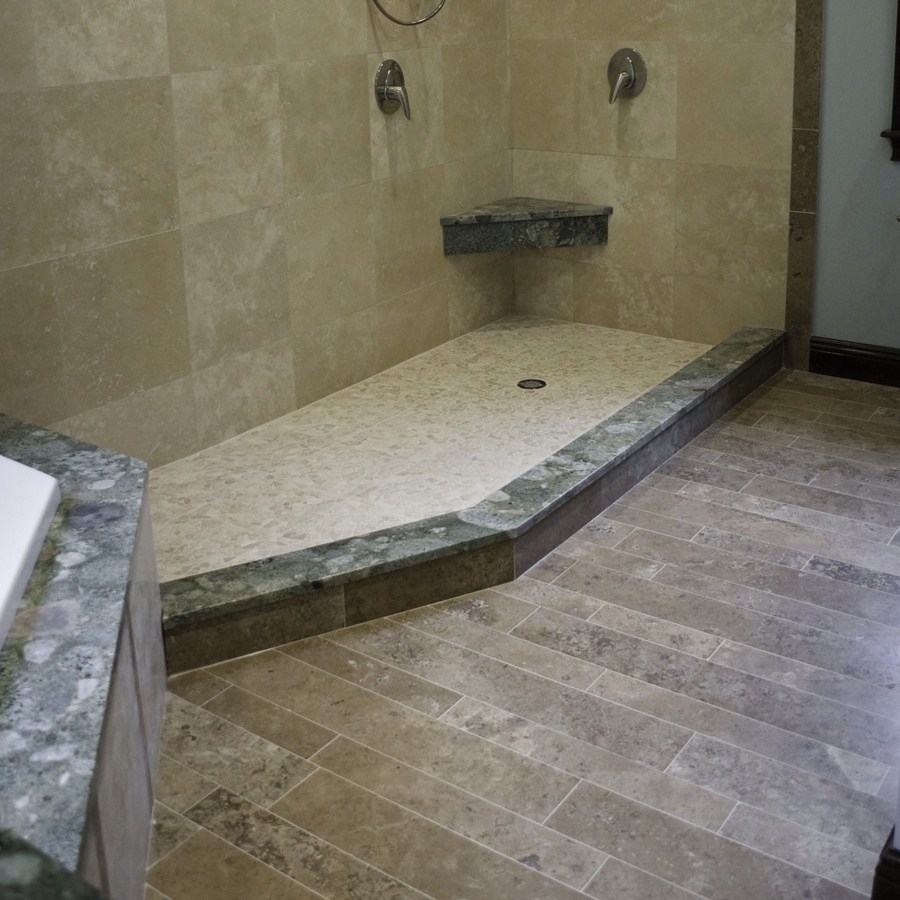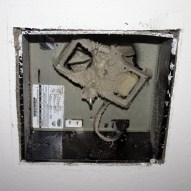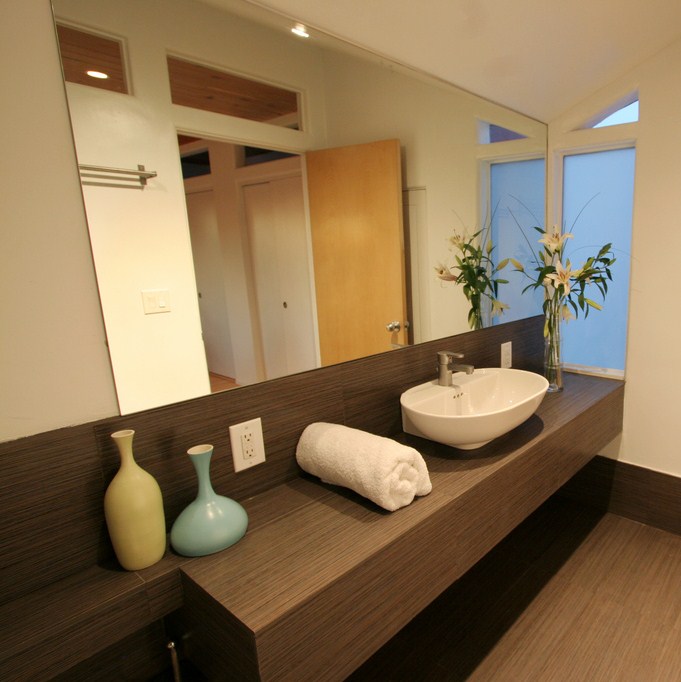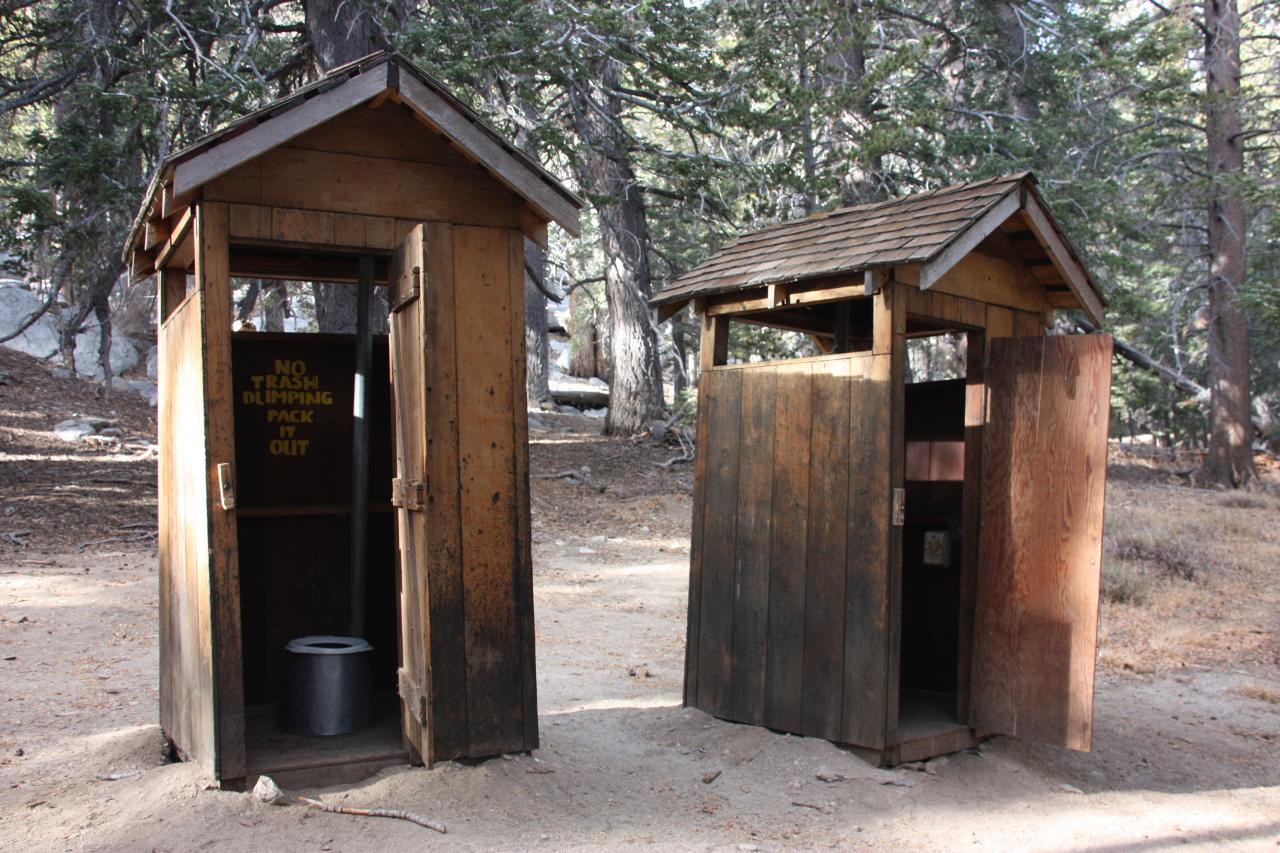Maintenance Tips: Bathroom Floors
We typically install flooring in our bathrooms that is best suited for wet areas, like ceramic tile, natural stone, or resilient (linoleum or vinyl) flooring. While these types of materials are durable and hold up better against water than a wood floor might, they are still susceptible to moisture damage. Performing routine, preventative, and material specific maintenance will keep your bathroom floor looking new for years to come.
 Courtesy of The Flooring Studio
Courtesy of The Flooring Studio
Routine Maintenance
Maintenance Tips: Bathrooms
Maintenance Tips: Bathroom Exhaust Fans
Maintenance Tips: Bathtubs and Showers
Maintenance Tips: Bathroom Vanities
Maintenance Tips: Toilets
After ensuring that your bathroom floor remains dry, the next step in routine maintenance is to frequently (more than once a week) sweep or vacuum the surface. This will loosen, collect, and remove dirt particles which, if allowed to remain, will wear away the finish floor surface over time. Monthly, if not more often, these hard surface floors should be damp mopped with an appropriate cleaning solution and warm water, then rinsed. The wet surface should be dried with an absorbent towel to prevent moisture damage and eliminate the potential for an individual to slip and fall.
In some cases a flooring manufacturer may recommend or have available a maintenance program. This may consist of a cleaning solution that is used on a weekly basis, a surface stripper that is used once or twice a year, and/or a refinisher. Whether or not a maintenance program is available, it is important to verify with the manufacturer what cleaners are approved for use, so as to not void the warranty of a new floor or cause damage to an existing one. A good rule of thumb is to use a cleaning solution that is non-abrasive and specifically designed for use with a certain type of flooring material.
Preventative Maintenance
So we understand routine maintenance: the floor is dry, regularly swept, damp mopped, and dried. Preventative maintenance is still necessary on a daily basis. It is important to remember that when moving heavy objects across the floor, it is best to lay thin sheets of wood down to protect the surface. Also, in order to prevent an accidental stain spills should be wiped up immediately. Should stains or problems persist on a floor surface, you can consult with the floor material manufacturer for suggestions on how to remove these blemishes.
Natural Stone and Ceramic Tile Maintenance
In most cases, what is identified above will cover the routine and preventative maintenance necessary to keep up a resilient floor's appearance and extend its life. Natural stone and ceramic tile floors require a bit more maintenance, because these types of floors are laid in a pattern with grouted joints. The grout is susceptible to staining and residual build-up, unlike the tile surface itself. When you damp mop the surface of these types of floors, you will also want to use a concentrated household cleaner or a tile and grout cleaner to remove any stains and residual build-up along the grouted joints. It is good practice to inspect the grout joints at this time for loose, cracked, or missing grout, and repair it as necessary.
When new natural stone or ceramic tile is installed, it is necessary to allow time for the grout to cure. After it has cured, a sealant should be applied to the grout and tile, and repeated every one to three years. The timing of a sealant application is dependent upon the product, the tile material, traffic, and how the floor is cleaned. Sealing your natural stone or ceramic tile flooring provides additional protection from dirt particles, spills, and staining.
Should your tile floors, either ceramic, resilient, or natural stone become damaged, the tile should be removed and replaced. While it is often considered to be unsightly, resilient sheet flooring can be patched if you have extra flooring material. If sheet flooring is gouged, bubbled, curling, or loose, it is probably best to replace the flooring altogether.

Buildipedia Staff
The Buildipedia research and writing staff consists of dozens of experienced professionals from many sectors of the industry, including architects, designers, contractors, and engineers.
Website: buildipedia.com/



